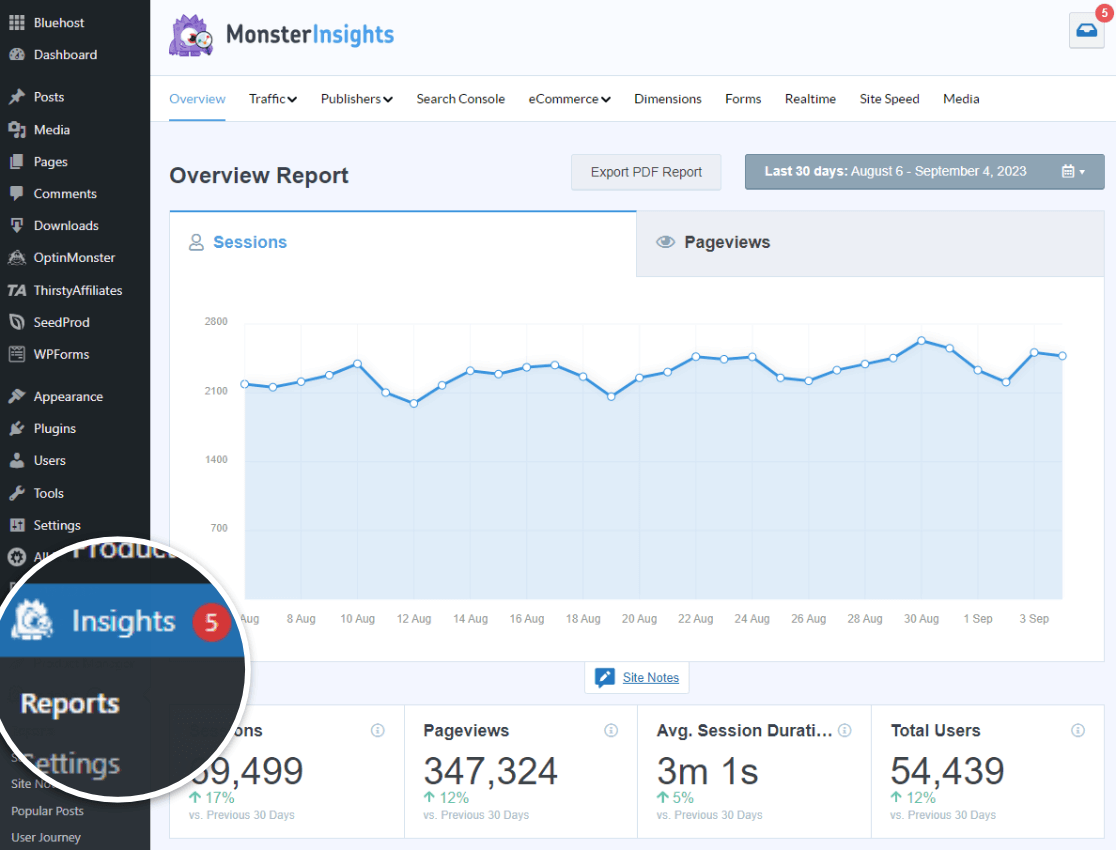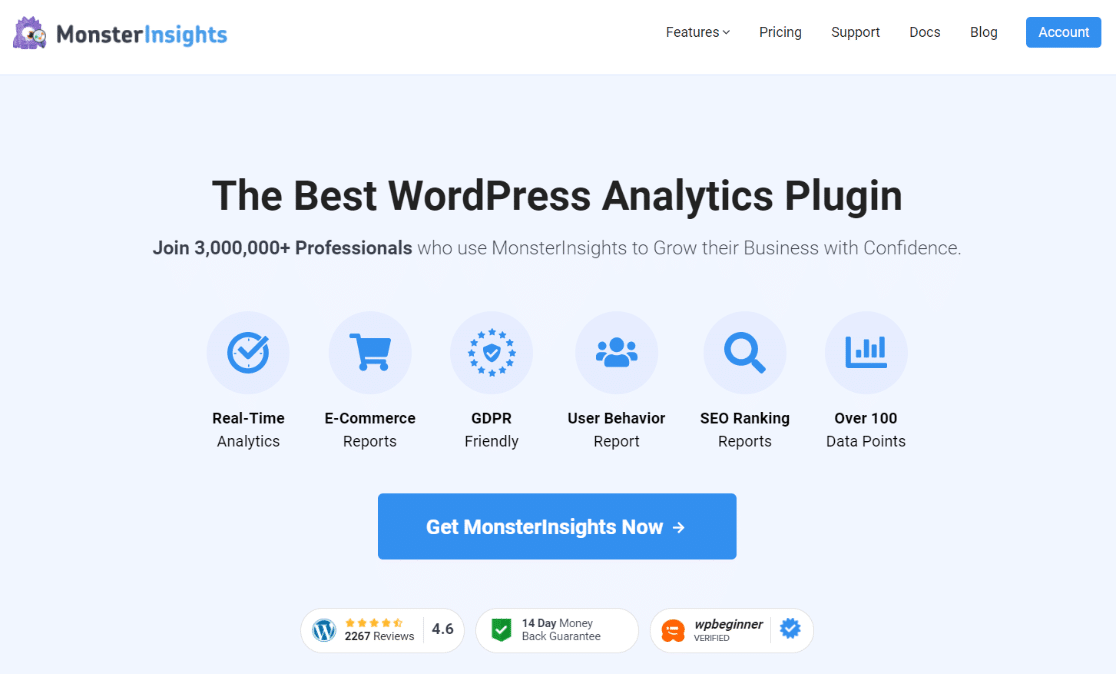When you’re busy running marketing campaigns, it’s easy to get caught up in email marketing metrics that don’t truly reflect their success.
While metrics like open rates and click-through rates are important, you should also track several other key performance indicators (KPIs) to better understand your email campaign’s effectiveness.
This lets you make better, data-driven decisions to optimize your campaigns and drive better results.
In this article, we’ll explore 9 essential email marketing metrics and KPIs every marketer should watch.
The Benefits of Tracking Email Marketing Performance
Closely monitoring your key email marketing metrics and KPIs can provide a lot of benefits for your business. Here are a few of them:
- Data-driven decision making: By having a clear, data-backed understanding of your email campaign performance, you can make more informed decisions about your email strategy, content, and audience targeting. This allows you to allocate your resources more effectively and improve your overall email marketing ROI.
- Improved deliverability: Tracking metrics like bounce rate and spam complaint rate can help you identify and address any deliverability issues, ensuring your emails consistently reach your subscribers’ inboxes.
- Enhanced engagement: Monitoring engagement metrics like open rate, click-through rate, and click-to-open rate enables you to fine-tune your subject lines, content, and calls-to-action to better resonate with your audience.
- Increased conversions: Understanding your email campaign’s conversion rate and revenue per email allows you to measure the direct impact on your revenue and make adjustments to optimize for better results.
Regularly reviewing these key email marketing metrics and KPIs will provide the data-driven insights you need to optimize your campaigns and get better results.
How to Track Your Email Marketing Performance
Effectively monitoring your email campaigns is crucial to ensuring your marketing strategies are precisely targeted and achieve your desired goals.
Your main resource for assessing campaign success is your email marketing platform. It provides key metrics such as open rates and click-through rates, which are really important for monitoring audience engagement.
For those managing a WordPress site, MonsterInsights is an exceptional tool for tracking both website and email marketing performance.
Recognized as the best Google Analytics plugin for WordPress, MonsterInsights lets you easily connect your website with Google Analytics, enabling you to view clear reports directly from your WordPress dashboard.

MonsterInsights is a helpful tool that makes it much easier to keep track of important data and set up detailed reports. It can set up many Google Analytics tracking features and reports in just a couple of clicks, including eCommerce tracking, form submission tracking, video click tracking, and much more.
By connecting your site to Google Analytics with MonsterInsights, you can also measure specific actions like how many visitors click to send an email or engage with links to your website within your emails, which are great email marketing analytics to have at hand.
This level of detail provides a comprehensive view of your marketing impact and helps guide your strategy.
To learn more, check out How to Set Up Google Analytics Email Tracking (4 Easy Steps).
Get started with MonsterInsights now!
Email Marketing Metrics and KPIs to Watch
These are the email marketing metrics and KPIs we’ll cover:
- Open Rate
- Click-Through Rate (CTR)
- Conversion Rate
- Bounce Rate
- Unsubscribe Rate
- Spam Complaint Rate
- Click-to-Open Rate (CTOR)
- List Growth Rate
- Revenue per Email
1. Open Rate
The open rate is one of the most commonly tracked email metrics, and for good reason. It tells you how many subscribers are opening and engaging with your emails.
To calculate your open rate, divide the number of emails opened by the number of emails delivered (excluding bounces).
While open rates can be a helpful KPI, it’s important to remember that they don’t tell the whole story.
Factors like image blocking and email client settings can impact the accuracy of the open rates.
That’s why focusing on other engagement metrics like click-through and conversion rates is crucial.
2. Click-Through Rate (CTR)
The click-through rate measures how many of your email recipients clicked on one or more links within your message.
To calculate CTR, divide the number of unique clicks by the number of emails delivered.
CTR is a valuable metric because it indicates how effectively your email content resonates with your audience and drives them to take a desired action, such as visiting your website or purchasing something.
A high CTR suggests that your subject lines, copy, and calls-to-action work together to engage your subscribers.
3. Conversion Rate
The conversion rate is the percentage of email recipients who completed a desired action, such as making a purchase, signing up for a webinar, or downloading a file.
To calculate the conversion rate, divide the number of conversions by the number of emails delivered.
Conversion rate is one of the most important email metrics, as it directly ties your email marketing efforts to tangible business results.
By tracking conversions, you can assess which email campaigns are most effective at driving your desired actions.
4. Bounce Rate
The bounce rate is the percentage of emails that couldn’t be successfully delivered to the recipient’s inbox. There are two types of bounces:
- Hard bounces: These are caused by invalid or non-existent email addresses, which should be removed from your list.
- Soft bounces: Temporary delivery failures, often due to a full inbox or server issue.
Keeping a close eye on your bounce rate can help you maintain a clean, healthy email list and avoid deliverability issues that could harm your sender’s reputation.
5. Unsubscribe Rate
The unsubscribe rate is the percentage of recipients who opt out of your email list after receiving a message.
A high unsubscribe rate can signal that your content no longer resonates with your audience or that you’re sending too many emails. Monitor your unsubscribe rate and try to understand the reasons behind it.
You can even offer an ‘exit survey’ to understand why people choose to leave your list and get feedback from your users.
6. Spam Complaint Rate
The spam complaint rate measures the percentage of recipients who mark your emails as spam.

This is an important metric to track, as a high spam complaint rate can negatively impact your email deliverability and sender reputation.
If you notice a spike in spam complaints, look back and evaluate your email content, email list, and sending practices to identify and address any issues.
7. Click-to-Open Rate (CTOR)
The click-to-open rate (CTOR) is the percentage of email recipients who click on a link after opening your message.
This metric provides valuable insight into the relevance and engagement of your email content by comparing the number of unique clicks to unique opens.
A high CTOR suggests that your subject lines effectively get people to open your emails and that your content is compelling enough to drive click-throughs.
A low CTOR may indicate that your subject lines are misleading or that your content is not meeting your subscribers’ expectations.
8. List Growth Rate
The list growth rate measures how your email list expands over time.
To calculate it, divide the number of new subscribers by the total number of subscribers and then multiply by 100.
Maintaining a healthy list growth rate is crucial for the long-term success of your email marketing efforts.
Monitor this metric closely and adjust your lead generation strategies as needed to ensure a steady income of new, engaged subscribers.
9. Revenue per Email
The revenue per email metric tracks the average revenue generated by each email you send.
To calculate it, divide the total revenue generated by your email campaigns by the number of emails sent.
This metric clearly indicates the financial impact of your email marketing efforts.
By understanding your revenue per email, you can make more informed decisions about your email strategy, content, and audience targeting.
Frequently Asked Questions
What are email marketing metrics?
Email marketing metrics are data points that measure the effectiveness of email campaigns, including open rates, click-through rates, conversion rates, and bounce rates.
What is a KPI in email marketing?
Email marketing KPIs (Key Performance Indicators) are measurable values demonstrating how effectively an email campaign achieves key business objectives, such as sales generated or leads acquired.
What are 3 ways of measuring success in email marketing?
Three ways to measure success in email marketing include analyzing open rates to monitor interest, tracking click-through rates to assess engagement, and measuring conversion rates to evaluate profitability.
What are good stats for email marketing?
Good stats for email marketing typically include open rates above 20%, click-through rates around 2.5%, and conversion rates that meet or exceed industry benchmarks, reflecting successful engagement and profitability.
That’s it for this guide on the most important email marketing metrics to look out for.
If you liked this article, be sure to read:
- 17 Email Marketing Best Practices You Need To Use
- Effective Email Marketing: 15 Best Tips for Campaign Success
- How to Build an Email List: 16 Highly Effective Ways
- Top 5 User Engagement Metrics for Your Website Explained
Not a user of MonsterInsights? Get started today!
Remember to follow us on X, Facebook, and YouTube for all the latest website, marketing, and Google Analytics tips!

